Muju Sunflower Pension&Hostel (무주해바라기펜션호스텔)
9.1Km 2024-12-24
129-15 , Gucheondong 1-ro, Muju-gun, Jeonbuk-do
+82-63-322-9987, +82-10-6533-3631
Muju Sunflower Pension Hostel is a family vacation pension within the tourist complex of Gucheon-dong, Muju, Jeollabuk-do. It is located in the upper reaches of Gucheon-dong Valley - a place of magnificent natural scenery and clean, healing air - and a deck has been installed above the river for summer-season swimming. Residents can sip herbal tea made with freshly-collected wild herbs (and offered free of charge), and enjoy the breakfast of their choice at the cafe.
Muju Rafting (무주래프팅)
9.6Km 2024-04-07
5-11, Jamdu-gil, Muju-gun, Jeonbuk-do
+82-63-322-7745
Muju Rafting resort is located on the upper Geumgang River and offers rafting, survival game, hiking, and fishing programs. The area is over 9,900 ㎡ in size and can accommodate lodging for up to 200 guests.
Bandi Land (무주 반디랜드)
9.6Km 2024-04-07
1324, Museol-ro, Muju-gun, Jeonbuk-do
+82-63-324-1155
Geared mainly towards children, Bandi Land is an excellent place to learn about and experience fireflies and other insects. It is comprised of Insect Museum, Firefly Research Center, Youth Campground, Log Cabin, and Firefly Habitat.
Located inside of Bandi Land, Muju Bandibyeol Astronomical Science Museum teaches various stories about space, including the birth & history of space, the solar system, constellations, and space circumstances. The Environment Theme Park also has exhibitions related to fireflies, an indicator insect proving Muju is a clean area, and other local insects, perfect for educational trips.
Old Walls of Jijeon Village in Muju (무주 지전마을 옛 담장)
10.3Km 2024-04-07
13, Gilbonji-gil, Muju-gun, Jeonbuk-do
+82-1899-8687
The Old Walls of Jijeon Village in Muju were mostly all built to mark the dividing line between houses, rather than to keep people out. The walls started out using mud and natural stones, but later changed to more square-shaped stones held together with cement and topped with Korean roofing tiles. The wall blends in harmony with the traditional houses of the village and the slowly flowing Namdaecheon Stream.
Taekwondowon Spirit Zone (태권도원 상징지구)
10.5Km 2024-12-13
1482 Museol-ro, Seolcheon-myeon, Muju-gun, Jeonbuk-do
+82-63-320-0114
Taekwondowon Spirit Zone is a space that implements three elements - physical strength, mental awareness, and higher wisdom -- which enable practitioners to become 'Taekwondo individuals' through endless physical training and martial arts exploration. There are forty-five programs themed around Taekwondo education and practices, as well as experience and cultural exchanges. The facility is open to anyone who has learned Taekwondo, both at home and abroad as well as those looking to discipline their minds and bodies through Taekwondo, including businesses, students, and the general public. The Pyeongwon Gwan at Taekwondowon is the national team’s comprehensive training facility, where the Taekwondo Poomsae national team members, junior national team members, the national reserve teams, and demonstration teams have their training sessions.
Taekwondowon Observatory (태권도공원 전망대)
10.5Km 2024-04-07
1482, Museol-ro, Muju-gun, Jeonbuk-do
+82-63-320-0114
Taekwondowon located in Muju-gun, Jeollabuk-do, serves as a main center for the 60 million taekwondo practitioners in 182 countries worldwide. Covering an area of 2.31 million square meters, the park combines the traditional and modern style in their buildings.
Hyangjeokbong Peak (Deogyusan Mountain) (향적봉(덕유산))
10.6Km 2024-04-07
1 Deoksan-ri, Anseong-myeon, Muju-gun, Jeonbuk-do
Hyangjeokbong Peak, standing at an elevation of 1,614 meters, is the highest peak of Deogyusan Mountain. It is an ideal destination for hiking year-round, but particularly renowned for its breathtaking winter scenery, earning a reputation as a popular spot for snow-covered mountain hikes. Visitors can reach the summit of Hyangjeokbong Peak by taking a gondola from the nearby Muju Resort to Seolcheonbong Peak, then embarking on a roughly 20-minute hike from Seolcheonbong Peak. Even beginners can enjoy the fantastic views of Deogyusan Mountain without much difficulty, contributing to its popularity.
Rajetongmun Gate (라제통문)
10.7Km 2024-04-07
Rajetongmun-ro, Muju-gun, Jeonbuk-do
+82-63-322-2905
The historical border of the Silla and Baekje Kingdoms, Rajetongmun Gate of Seolcheon-myeon, Muju was formed from a rock cave in Seokgyeonsan Mountain. The tunnel is approximately 3 meters in x_height and 10 meters in length, and divides the villages of Sindu Maeul into Dugil-ri, Seolcheon-myeon and Inam Maeul in Socheon-ri. During the Three Kingdoms Period, the rocky ridges of Seokgyeonsan Mountain drew the boundary of Silla's Mupung in the east with Baekje's Seolcheo to the west.
Tracing the history from the Three Kingdoms Period to the Goryeo dynasty, the cultures and traditions of the two regions were markedly different. If curious about the difference, one could simply stop by Seolcheon on market day, where the Muju and Mupung local
dialects and customs can easily be distinguished.
People used to cross Seokgyeonsan Mountain by a footpath along the rocky ridge to travel between Seolcheon and Mupung. During the Japanese occupation, a new road was created by turning a cave into a tunnel through the mountain so cows and horse carts could freely pass from Muju to Gimcheon.
General Kim Yoo Shin from the Silla Kingdom, the hero of unification of the Three Kingdoms, often passed by the gate, later giving rise to the gate's nickname, Tongilmun (literally "Unification Gate"). The gate
is number one on the list of 33 scenic sites in Gucheon-dong.
Muju Baengnyeonsa Temple (백련사(무주))
11.5Km 2024-04-07
580, Baengnyeonsa-gil, Muju-gun, Jeonbuk-do
+82-63-322-3395
Baengnyeonsa Temple is located in the upper part of Gucheondong Valley on Deogyusan Mountain. It is said that during the Silla Kingdom, a white lotus flower bloomed here, and that's why the temple is called Baengnyeonsa (lit. White Lotus Temple). The temple is the only remaining temple out of 14 that were built in the Gucheon-dong area of Muju. After walking over Baengnyeongyo Bridge at the entrance of the temple, you will come to a stone stairway. At the top is the main sanctuary. The majesty and beauty of the main sanctuary is well complemented by the mountains. The Mokjosamjonbul Stone Buddha within the main building is presumed to have been built in the latter half of the Joseon dynasty. Past Myeongbujeon is Baengnyeonsa’s Sajeokbi tombstone, and the workmanship of the carved calligraphy is very highly regarded.
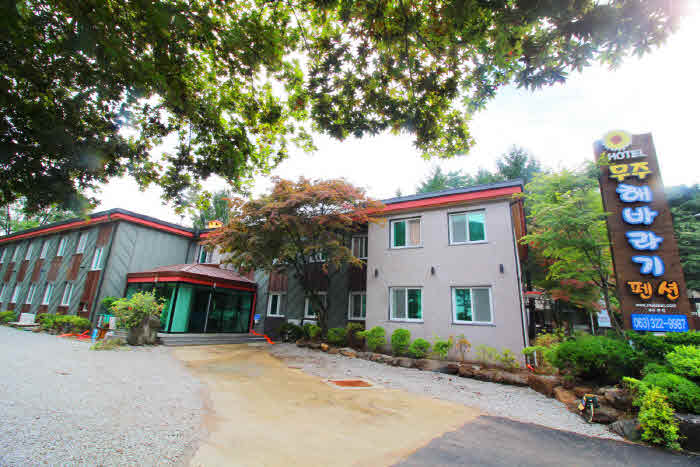
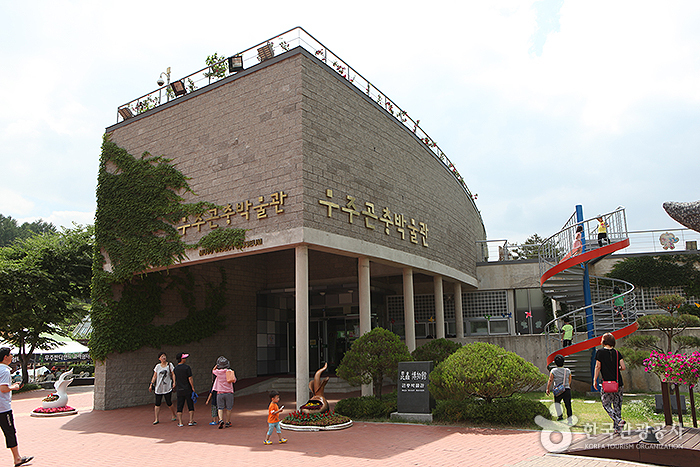
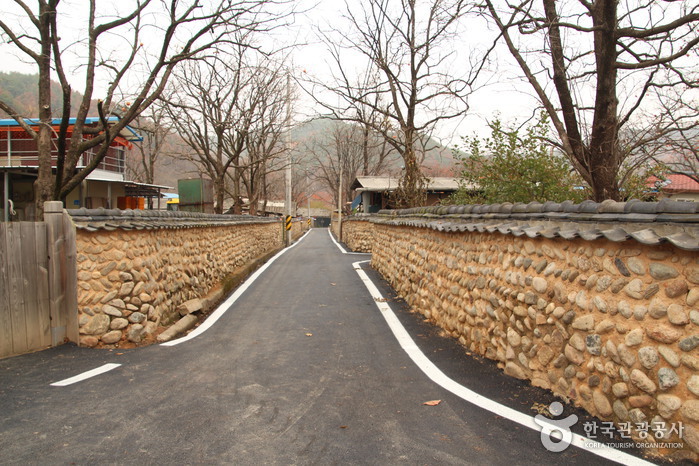
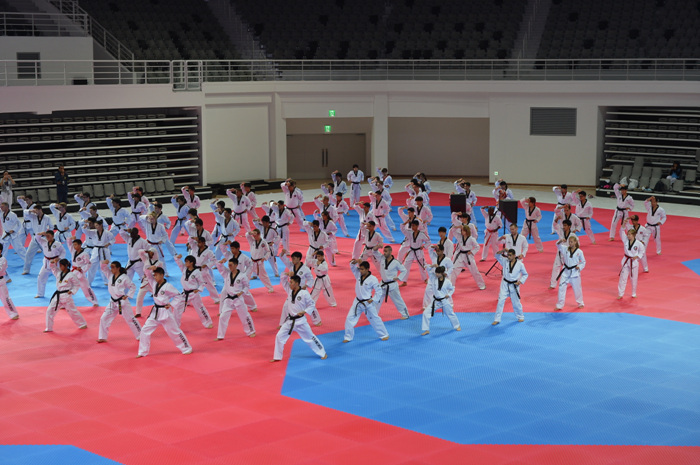
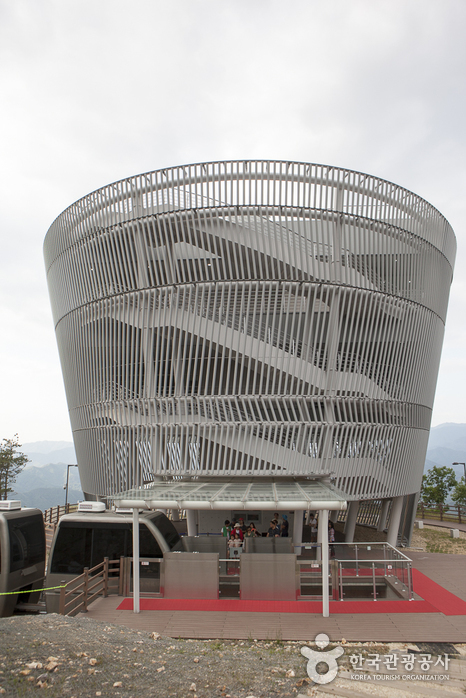
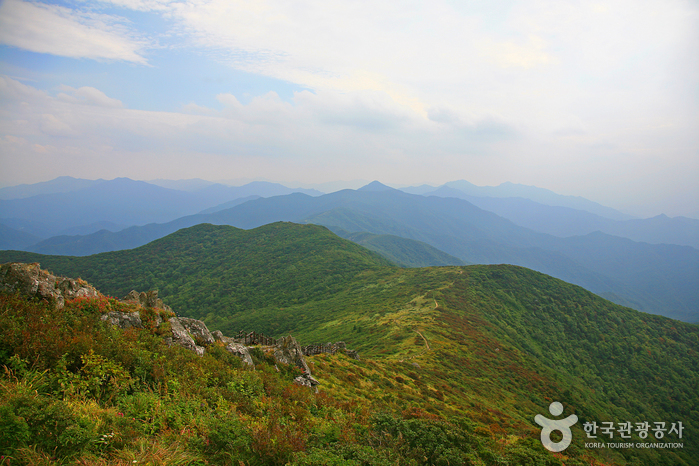

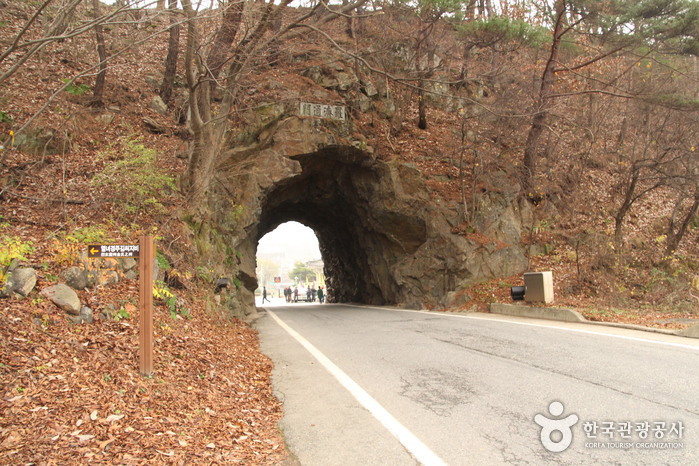
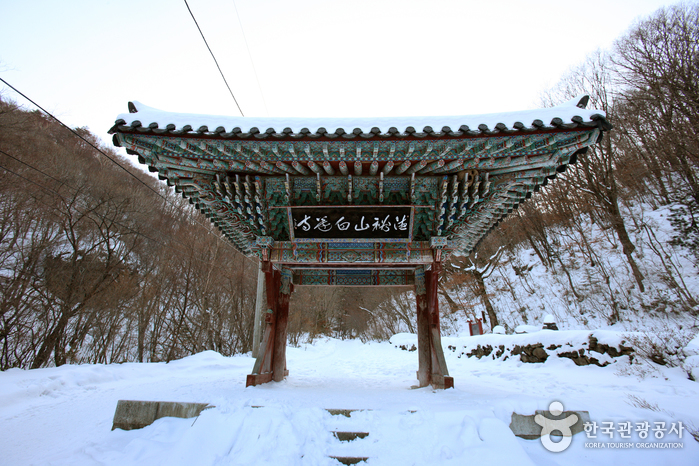
 English
English
 한국어
한국어 日本語
日本語 中文(简体)
中文(简体) Deutsch
Deutsch Français
Français Español
Español Русский
Русский